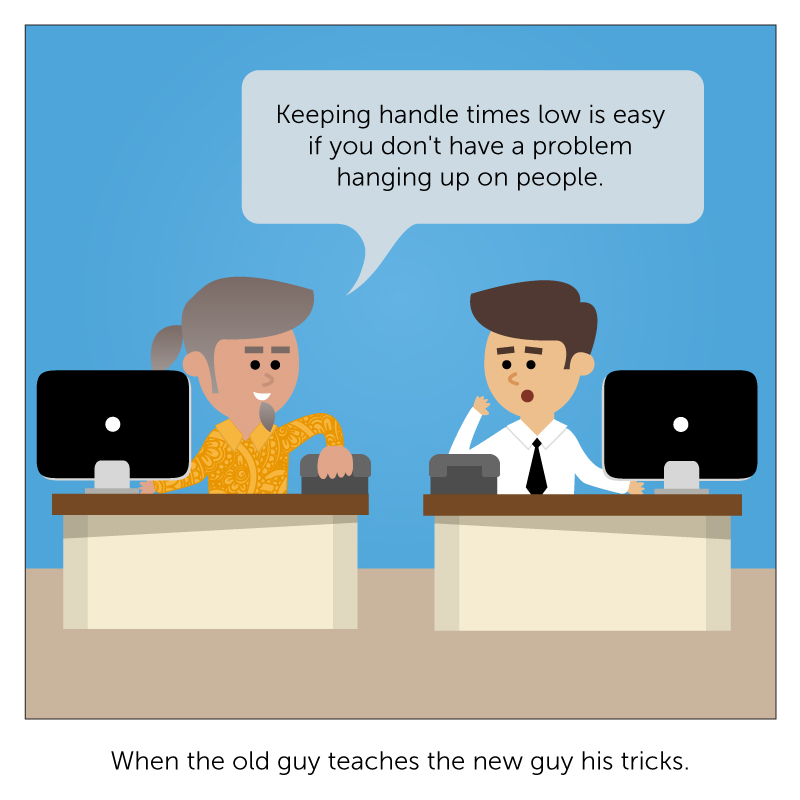Contact Center Unified Communications Best Practice Technology is the fifth in a series on Contact Center Unified Communications.
Companies with Contact Center Unified Communications achieve improved performance metrics, according to a recent Aberdeen Research survey. In our last blog, Contact Center Unified Communications Best Practice, we talked about the best practices and processed implemented by these companies. In this blog we will explore what other best practice technologies these same companies have.
You’ll see common themes emerge as we go through the list:
- Improving agent productivity
- Giving agents the information, people, and resources they need to be effective
- Improving customer service quality
- Improving collaboration between the contact center and the rest of the enterprise
This graphic illustrates the Aberdeen Research showing how businesses with Contact Center Unified Communications are more innovative than their peers in implementing best practice technology. We will dive into each of these technologies to see how they benefit your contact center.

Contact Center Unified Communications Best Practice Technology #1 – Desktop Analytics
76% of enterprises with contact center unified communications have implemented Desktop Analytics, as opposed to 30% of companies without Contact Center Unified Communications. Understanding what each agent does throughout the day, and specifically what they do during customer interactions, is a best practice that allows you to reinforce behaviors that have positive results, and discourage behaviors with negative results.
Contact Center Unified Communications Best Practice Technology #2 – CRM
75% of enterprises with Contact Center Unified Communications have implemented a Customer Relationship Management (CRM) system, as opposed to 34% of companies without Contact Center Unified Communications. A CRM contains all the information you have collected about your customer, including their contact information, what products they have, and what interactions they have had with you. Arming the agent with this information helps the agent have more success in the customer interaction, resulting in positive customer satisfaction, more upsells, and better issue resolution.
Contact Center Unified Communications Best Practice Technology #3 – Knowledge Management
72% of enterprises with Contact Center Unified Communications have implemented Knowledge Management, as opposed to 26% of companies without Contact Center Unified Communications. Organizations with Knowledge Management use it to create, share, and manage knowledge and information. This allows them to share lessons learned and continuously improve their processes. For example, with the right unified agent app, such as CC-One’s, a contact center can include online process guides, online help guides, online templates, and other best practice documents and FAQs to help the agent be more efficient.
Contact Center Unified Communications Best Practice Technology #4 – Single Sign-On
65% of enterprises with Contact Center Unified Communications have implemented Desktop Analytics, as opposed to 26% of companies without Contact Center Unified Communications. Single sign-on allows your agents to sign in to one application, and then they are automatically signed in to all the others they need, saving them time and making them more responsive.
Contact Center Unified Communications Best Practice Technology #5 – Enterprise Social Collaboration Tools
59% of enterprises with Contact Center Unified Communications have implemented Social Collaboration Tools, as opposed to 17% of companies without contact center unified communications. Social collaboration tools, such as BroadSoft Team-One, provide a workspace for your teams to make posts, assign tasks, share documents, etc. This is another best practice tool that gives your contact center agents access to the information they need to successfully complete customer interactions.
Contact Center Unified Communications Best Practice Technology #6 – WebRTC
59% of enterprises with Contact Center Unified Communications have implemented Web Real-Time Communications (WebRTC), as opposed to 15% of companies without Contact Center Unified Communications. WebRTC is an enabling technology which is frequently used for support. It allows peers to see each other’s desktops, for a contact center agent to see what the customer is seeing on their desktop, to run diagnostics, etc. This is another resource which helps agents be more effective.
Contact Center Unified Communications Best Practice Technology #7 – Enterprise Search
56% of enterprises with Contact Center Unified Communications have implemented Enterprise Search, as opposed to 18% of companies without Contact Center Unified Communications. Enterprise Search lets agents search for the information they need across enterprise applications, regardless of what network it’s on or where it resides. This is another tool for the agent to get questions answered to better serve the customer.
Contact Center Unified Communications Best Practice Technology #8 – Call Recording
73% of enterprises with Contact Center Unified Communications have implemented Call Recording, as opposed to 26% of companies without Contact Center Unified Communications. Call recording enables agents, managers, peers, and colleagues to listen to a customer call. This is often used for call quality management, but can also be used to provide context and information to the next agent who interacts with that customer, providing an improved customer experience.
Contact Center Unified Communications Best Practice Technology #9 – VoIP
Innovative call centers see the value of moving to the cloud and using Voice Over IP (VoIP). 65% of enterprises with Contact Center Unified Communications have implemented VoIP, as opposed to 37% of companies without Contact Center Unified Communications. The main reason businesses embrace VoIP is because it reduces the total cost of ownership (TCO), since a single broadband connection can transmit more than one phone call and does not require desktop phones. Since it is voice over a data line, it lets you use your computer to make calls directly from within an app.
Contact Center Unified Communications Best Practice Technology #10 – Contact Center and CRM Integration
59% of enterprises with Contact Center Unified Communications have integrated their contact center and Customer Relationship Management (CRM) system, as opposed to 23% of companies without Contact Center Unified Communications. While having a CRM is an advantage in and of itself (see #2 above), integrating that CRM with your call center application provides additional benefits. For example, when your agent logs into the Cisco© Customer Journy Platform, they can automatically be logged into the CRM as well. Then when a customer calls, the system pulls their customer record out of the CRM without the agent having to search for it, and displays it within the Agent App. These features allow the agent to interact with the customer “in-context”.
Contact Center Unified Communications Best Practice Technology #11 – Unified Agent Desktop
57% of enterprises with Contact Center Unified Communications have implemented a unified agent desktop, as opposed to 19% of companies without contact center unified communications. With a unified desktop, agents are not spending time juggling multiple applications on their desktop, but are able to access all the tools they need in one clean interface. This saves the agent time and frustration, and improves customer satisfaction and first call resolution.
In Summary
The innovative companies that implement Contact Center Unified Communications are also implementing other best practice technologies. These additional Contact Center Unified Communications best practice technologies also help agents find the right information quickly, review past customer interactions, and collaborate within the enterprise to effectively meet customer needs. Along with unified communications, these contact centers are adopting additional technologies that indicate their commitment to give contact center agents everything they need to be more productive and improve the customer experience.
In the next blog in this series, we’ll focus on top Contact Center Unified Communications Challenges that are roadblocks to companies adopting more innovating ways to interact with their customers.
To learn more about the Aberdeen Group research “How to Maximize Customer Satisfaction: The Role of Communication & Collaboration”:
- Listen to the Aberdeen Research on-demand webinar The Business Value of Contact Center and UC Integration
- Download the Aberdeen Research Infographic Maximize Customer Satisfaction through Communication & Collaboration








